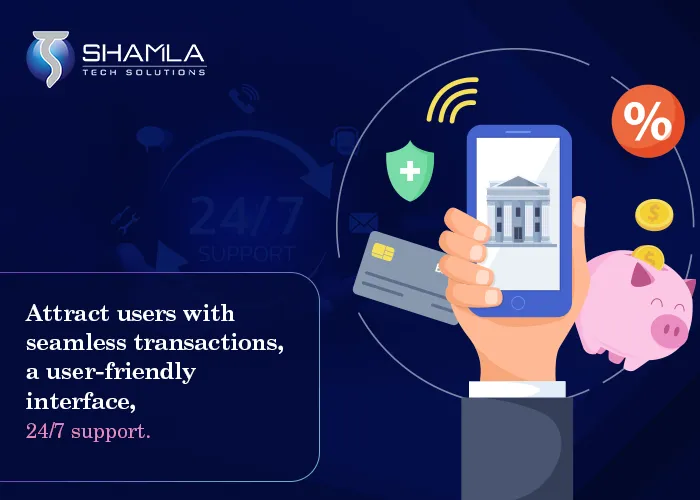Cryptocurrency exchange development has emerged as a lucrative opportunity for entrepreneurs looking to tap into the rapidly expanding digital currency market. However, success in this highly competitive space requires a deep understanding of the complexities involved. In this guide, we’ll provide you with a detailed roadmap on How to create cryptocurrency exchange, highlighting crucial steps such as selecting the right exchange model, ensuring robust security measures, and integrating liquidity. Whether you’re aiming to create a cryptocurrency exchange from scratch or planning to launch your cryptocurrency exchange in a specific niche, it’s essential to know how to build a cryptocurrency exchange that can compete with established platforms like Binance or Coinbase.
Understanding How to develop a cryptocurrency exchange also involves tackling challenges like regulation, compliance, and user experience. By following our guide, you’ll be equipped with the knowledge and strategies needed to build cryptocurrency exchange platforms that attract users and achieve long-term success in this competitive industry.

Understanding Cryptocurrency Exchange Development: What You Need to Know
Developing a cryptocurrency exchange is a multi-step process that requires careful planning, technical expertise, and adherence to regulatory guidelines. Below are the key steps on How to create cryptocurrency exchange successfully, incorporating the essential aspects to ensure a secure, user-friendly, and compliant platform.
Step 1: Conduct Market Research and Define Your Niche
Before you begin How to create cryptocurrency exchange, the first step is to conduct thorough market research. Understanding your target audience and competitors is crucial for identifying opportunities and differentiating your platform. Decide on whether you want to cater to retail traders, institutional investors, or niche markets like NFTs. This initial research lays the foundation for How to develop a cryptocurrency exchange that stands out in a crowded market.
Step 2: Choose the Type of Cryptocurrency Exchange
The next step in how to launch a cryptocurrency exchange is selecting the type of exchange you want to develop. There are three main types:
- Centralized Exchange (CEX): These are user-friendly, managed by a central authority, and offer higher liquidity but require more regulatory compliance.
- Decentralized Exchange (DEX): Operates without a central authority, providing users with greater control and privacy, but they can be more complex to navigate.
- Hybrid Exchange: Combines the benefits of both CEX and DEX, offering more flexibility.
Choosing the right model is a critical decision when you create a cryptocurrency exchange, as it determines how your platform will function and how users will interact with it.
Step 3: Design the Architecture of Your Platform
Once you’ve selected your exchange type, the next phase of How to create cryptocurrency exchange involves designing its architecture. This includes the front-end and back-end development, user interface (UI), and user experience (UX). Your platform should be intuitive, fast, and able to handle a large number of transactions efficiently. In this step, ensure that the order-matching engine and transaction processing systems are capable of handling high volumes of trades, which is crucial for scalability.
Step 4: Select the Right Technology Stack
Choosing the correct technology stack is vital in understanding how to build a cryptocurrency exchange. The technology stack includes the programming languages, frameworks, and servers that will power your platform. Key components include:
- Programming Languages: Common languages like Python, JavaScript, and C++ are frequently used.
- Blockchain Integration: To support cryptocurrency transactions, integrate blockchain networks like Bitcoin, Ethereum, or any other protocol.
- Database: Use a reliable database like MySQL or MongoDB for data management.
- Wallet Integration: Secure wallets, both hot and cold, are essential for storing user funds and facilitating transactions.
By selecting the right tech stack, you ensure that your platform is robust, secure, and scalable for future growth.
Step 5: Implement Essential Security Features
Security is the cornerstone of How to create cryptocurrency exchange. Given the high-value nature of cryptocurrency trading, ensuring the security of user funds and data is paramount. Essential security measures include:
- Two-Factor Authentication (2FA): To add an extra layer of security.
- Cold Wallets: Store most user funds offline to prevent hacks.
- Encryption: Use strong encryption protocols to safeguard sensitive information.
- Anti-DDoS Protection: Protect your platform from Distributed Denial of Service attacks.
Ensuring that your platform is secure is vital when you launch your cryptocurrency exchange to gain user trust and protect against cyber threats.
Step 6: Integrate Liquidity Solutions
Liquidity is crucial for the smooth operation of any exchange. Low liquidity can lead to poor trading experiences, so ensuring that your platform offers high liquidity is an essential part of How to create cryptocurrency exchange. You can integrate liquidity by:
- Partnering with market makers or third-party liquidity providers.
- Implementing API integration with other exchanges to aggregate liquidity.
- Encouraging users with incentive programs to increase trading volumes.
A liquid exchange will attract more users and improve the overall functionality of your platform.
Step 7: Ensure Regulatory Compliance
Regulatory compliance is a significant aspect of How to develop a cryptocurrency exchange. Depending on your location, you’ll need to adhere to specific rules, such as Know Your Customer (KYC) and Anti-Money Laundering (AML) regulations. Failure to comply can result in heavy fines or even the closure of your platform. Ensure that your platform has KYC/AML verification processes in place, and always stay updated on changes in crypto regulations. This will ensure your platform operates legally and avoids regulatory complications.
Step 8: Integrate Payment Gateways and Multiple Currencies
A key part of how to build a cryptocurrency exchange is integrating payment gateways to allow users to deposit and withdraw funds easily. Your platform should support both fiat and cryptocurrency transactions. Multiple payment options, such as credit cards, bank transfers, and e-wallets, provide flexibility for your users. Offering a wide range of supported currencies—Bitcoin, Ethereum, Solana, and others—will also increase the appeal of your platform.
Step 9: Test the Platform
Before you launch your cryptocurrency exchange, thorough testing is essential. Conduct both functional and security tests to ensure the platform operates as expected and can handle high traffic loads without issues. Additionally, test for potential security vulnerabilities, as these could be exploited by malicious actors. A robust testing phase will help you iron out any bugs or flaws before going live.
Step 10: Launch Your Cryptocurrency Exchange
After thorough testing, you are ready to launch your cryptocurrency exchange. It’s important to have a well-planned launch strategy that includes marketing, user acquisition, and support systems in place. Ensure you have a customer service team ready to address any issues or concerns users may have during the early stages. Promoting your platform through SEO, social media, and crypto communities can help attract your first users.
Marketing is essential for a successful launch. Highlight the unique features of your platform to attract users who are looking for a reliable, secure, and user-friendly exchange.
Step 11: Provide Ongoing Maintenance and Support
Even after you create a cryptocurrency exchange and it goes live, your job is not done. Ongoing maintenance and support are critical to ensure the platform runs smoothly. Regular updates, security patches, and system monitoring will keep your platform secure and efficient. Additionally, offer 24/7 customer support to assist users and resolve any issues they encounter.
Knowing How to create cryptocurrency exchange involves several key steps: selecting the right exchange model, choosing a robust technology stack, ensuring regulatory compliance, and integrating liquidity solutions. By following these steps and ensuring a secure and user-friendly platform, you can successfully launch your cryptocurrency exchange and build a trusted platform in the competitive crypto market.

How to Choose the Right Cryptocurrency Exchange for Your Business
When learning how to launch a cryptocurrency exchange, one of the most critical decisions you’ll make is choosing the type of exchange that fits your business model. This choice will determine the core architecture of your platform, influencing its features, security, and user experience. Let’s look at the factors to consider when choosing the right exchange model:
Target Audience: Are you building a platform for experienced traders, or is your audience composed of beginners? If you’re targeting a wide audience, a centralized exchange with a user-friendly interface might be ideal. If your audience values privacy and control, a decentralized exchange may be a better fit.
Liquidity: High liquidity is essential for smooth trading experiences. Centralized exchanges generally offer higher liquidity because they pool funds from multiple users, making it easier to match buy and sell orders. If liquidity is a priority, you may want to develop a centralized exchange.
Security and Control: Decentralized exchanges offer more control and transparency as they operate through smart contracts and decentralized protocols. However, if you want to maintain full control of user accounts and transactions, a centralized exchange is the way to go.
Choosing the right type of exchange is foundational when deciding How to create cryptocurrency exchange platforms that meet both your business needs and user expectations.
What Are the Features to Include When Creating a Cryptocurrency Exchange Platform?
To successfully create a cryptocurrency exchange, it’s essential to integrate the right set of features that not only ensure smooth functionality but also provide users with a secure, intuitive, and engaging trading experience. When considering How to create cryptocurrency exchange, you must focus on user experience, security, and regulatory compliance, as these are key factors that can set your platform apart from competitors.
Below are the key features to consider when learning How to create cryptocurrency exchange platforms.
1. User Registration and Verification
The first step in How to develop a cryptocurrency exchange is enabling users to register and verify their identity. The registration process should be simple, intuitive, and highly secure. To create a cryptocurrency exchange that complies with regulatory requirements, it is important to include the following:
- Email and phone verification: Ensure only genuine users can register on your platform.
- KYC (Know Your Customer): This process is mandatory in many countries for regulatory compliance and helps prevent fraud and money laundering.
Incorporating these steps ensures that when you launch your cryptocurrency exchange, users can trust the platform’s security measures.
2. Wallet Integration
When figuring out how to build a cryptocurrency exchange, wallet integration is one of the most crucial features. Every exchange needs secure and reliable wallets to store, send, and receive digital currencies. Here’s what to consider:
- Multi-currency wallet: To cater to a broad audience, your platform should support a wide range of cryptocurrencies.
- Cold wallets: These offline wallets ensure heightened security, storing users’ funds away from potential hacking threats.
A well-thought-out wallet system is integral to How to create cryptocurrency exchange platforms that can securely manage a variety of assets.
3. Trading Engine
The trading engine is the heart of your exchange, which processes and matches buy and sell orders. When you create a cryptocurrency exchange, the efficiency of the trading engine will determine the speed and reliability of transactions. Here are the elements to consider:
- Order matching: The trading engine should efficiently match buy and sell orders, ensuring timely and accurate trades.
- High transaction volume: To build cryptocurrency exchange platforms that can handle high traffic, your engine must be capable of processing a significant number of transactions per second (TPS).
An efficient trading engine is key when you launch your cryptocurrency exchange, allowing users to execute trades without delay or error.
4. Order Types
A fully functional exchange must offer multiple order types to accommodate different trading strategies. When deciding How to create cryptocurrency exchange features, it’s important to include:
- Market orders: Executed at the current market price.
- Limit orders: Allows users to set the price at which they want to buy or sell.
- Stop-loss orders: Helps users limit potential losses by automatically selling when the price drops to a certain level.
Including multiple order types ensures that when you build cryptocurrency exchange platforms, you meet the needs of both beginner and advanced traders.
5. Admin Panel
The admin panel plays a crucial role in managing the exchange and monitoring user activities. As you learn How to create cryptocurrency exchange, consider these functionalities for the admin panel:
- Monitoring user activities: Track real-time transactions and trading activities.
- Managing liquidity: Control and monitor the liquidity of your platform.
- KYC/AML management: Ensure compliance by reviewing user verification documents.
Having an intuitive admin panel is a crucial aspect of how to launch a cryptocurrency exchange that remains secure and compliant with industry regulations.
6. Security Features
Security is arguably the most critical element when you decide How to develop a cryptocurrency exchange. Your platform will handle large amounts of user funds, so robust security measures are essential. Security features to consider include:
- Two-factor authentication (2FA): Provides an extra layer of security for user accounts.
- Encryption: All sensitive data should be encrypted to protect against hacking.
- DDoS protection: Prevents Distributed Denial of Service attacks, which can disrupt your platform.
Ensuring that these features are integrated from the beginning is key to How to create cryptocurrency exchange that users can trust.
7. Liquidity Management
Liquidity is essential for any exchange to ensure that there is always enough volume for users to trade without experiencing significant slippage. When deciding how to build a cryptocurrency exchange, consider the following methods for ensuring liquidity:
- Liquidity pools: Integrating liquidity pools from external sources can help provide sufficient market depth.
- Market makers: You can either act as a market maker or partner with third-party providers to ensure liquidity.
Ensuring liquidity is a critical factor in How to create cryptocurrency exchange platforms that offer seamless trading experiences.
8. Customer Support
Providing exceptional customer service is essential for retaining users and building trust in your platform. Here’s what to consider when learning How to create cryptocurrency exchange that excels in customer support:
- 24/7 support: Given the global nature of cryptocurrency, round-the-clock support is essential.
- Multiple channels: Offer support via live chat, email, and FAQs.
A strong support system is vital when you launch your cryptocurrency exchange, as users need to know they can rely on prompt assistance.
9. Trading Charts and Analytics
Advanced traders rely heavily on trading charts, indicators, and analytics to make informed decisions. When you create a cryptocurrency exchange, ensure you provide users with tools such as:
- Real-time price charts: Integrated with technical analysis tools.
- Historical data: So users can analyze past market trends.
Incorporating robust analytics is critical to how to launch a cryptocurrency exchange that caters to professional traders.
10. Mobile Compatibility
In today’s digital age, a significant portion of trading happens via mobile devices. When figuring out How to develop a cryptocurrency exchange, ensure that your platform is mobile-friendly:
- Responsive design: Your website should adapt seamlessly to all devices.
- Mobile apps: Consider offering a dedicated mobile app for iOS and Android users.
A mobile-compatible platform is essential when you launch your cryptocurrency exchange, as it enhances accessibility for users on the go.
When considering How to create cryptocurrency exchange platforms, ensuring the inclusion of these essential features will help build a competitive and secure platform. From a robust trading engine to advanced security measures and mobile compatibility, these elements are key to how to launch a cryptocurrency exchange that can thrive in the market. Whether you want to create a cryptocurrency exchange for retail traders or institutional investors, focusing on these features will ensure you launch your cryptocurrency exchange successfully and stand out in a crowded market.

What are the Security Requirements for Creating a Crypto Exchange?
When considering How to create cryptocurrency exchange platforms, security is the most critical factor. Due to the decentralized and often anonymous nature of cryptocurrencies, exchanges are prime targets for cybercriminals. Therefore, implementing top-notch security measures is essential to protect user funds, personal information, and platform operations. In this section, we’ll cover the key security requirements to keep in mind when you build a cryptocurrency exchange and launch your cryptocurrency exchange successfully.
1. Two-Factor Authentication (2FA)
Two-factor authentication (2FA) is one of the primary layers of security you must include when you create a cryptocurrency exchange. 2FA adds an extra step to the login process by requiring users to verify their identity using a second form of authentication, typically a code sent to their phone or email. This ensures that even if a hacker obtains a user’s password, they still won’t be able to access the account without the second factor.
To successfully build a cryptocurrency exchange, 2FA is essential in reducing the risk of unauthorized access to user accounts, making the platform more secure.
2. SSL (Secure Socket Layer) Encryption
Implementing SSL encryption ensures secure communication between your platform and the users’ browsers. This is a standard security feature for any online platform, but particularly important when you are learning How to create cryptocurrency exchange platforms. SSL encryption protects sensitive data such as login credentials, personal details, and financial transactions from being intercepted by hackers.
Ensuring your exchange uses SSL is crucial when you create a cryptocurrency exchange that users can trust for secure and private transactions.
3. Cold Wallet Storage
When figuring out how to develop a cryptocurrency exchange, one of the most effective ways to protect user funds is by integrating cold wallet storage. Cold wallets are offline wallets that store cryptocurrencies in a secure, isolated environment, making them inaccessible to hackers.
To ensure optimal security, when planning How to develop a cryptocurrency exchange, the majority of users’ funds should be stored in cold wallets, with only a small percentage kept in hot wallets (online wallets) for day-to-day trading activities. This way, even in the event of a security breach, the risk to user funds is minimized.
4. Multi-Signature Wallets
Multi-signature (multi-sig) wallets add an additional layer of security by requiring multiple parties to approve a transaction before it is executed. When planning How to create cryptocurrency exchange platforms, incorporating multi-signature wallets ensures that no single person or entity can authorize a transfer without the necessary approvals, preventing unauthorized access to funds.
Using multi-sig technology will be a critical part of how to build a cryptocurrency exchange that ensures security in fund management and transaction authorization.
5. Anti-DDoS Protection
Distributed Denial of Service (DDoS) attacks are common in the cryptocurrency world, where hackers flood the servers with traffic to overload the system and bring down the platform. To successfully launch your cryptocurrency exchange, you must implement anti-DDoS protection to keep your platform operational under potential attack.
DDoS attacks can disrupt trading, causing significant downtime, which will harm the reputation of your platform. Therefore, understanding How to create cryptocurrency exchange systems with strong anti-DDoS measures is key to ensuring platform stability and security.
6. Regular Security Audits
Security audits are critical to maintaining the ongoing safety of your exchange. When determining How to create cryptocurrency exchange platforms, performing regular security audits will help identify vulnerabilities in the platform. These audits can be performed by internal teams or external cybersecurity experts who can simulate attacks to test the strength of your system.
Regular audits are a crucial step of how to build a cryptocurrency exchange to ensure you are staying ahead of potential threats and closing any gaps before they can be exploited.
7. KYC (Know Your Customer) and AML (Anti-Money Laundering)
To comply with legal regulations and avoid fraudulent activities, integrating KYC and AML protocols is essential when you start a cryptocurrency exchange. KYC requires users to verify their identity before using the platform, while AML measures help detect and prevent money laundering and other illicit activities.
Incorporating these processes ensures compliance with global regulations, which is critical for How to create cryptocurrency exchange platforms that operate legally and ethically.
When you’re learning How to create cryptocurrency exchange platforms, security must be your top priority. From 2FA and SSL encryption to cold wallet storage and automated threat detection, these are the security essentials to keep your platform secure and reliable. Ensuring the safety of user funds and data is paramount to the success of your platform and will build trust among your users. By understanding how to build a cryptocurrency exchange with the highest security standards, you’ll be able to launch your cryptocurrency exchange with confidence, knowing it can withstand the growing threats in the digital currency space.

Choosing the Right Technology Stack for Cryptocurrency Exchange Development
When considering How to create cryptocurrency exchange, selecting the right technology stack is critical for the platform’s performance, scalability, and security. A robust tech stack will help ensure the exchange can handle high transaction volumes, offer real-time trading, and provide the necessary security for user data and funds. Whether you’re figuring out how to build a cryptocurrency exchange or deciding on the best architecture for your project, here’s a breakdown of the essential components of your tech stack:
Frontend Development: The frontend, or user interface (UI), is how users interact with the platform. Choosing technologies like React, Angular, or Vue.js ensures that your exchange’s UI is fast, responsive, and user-friendly. The design should be intuitive and optimized for various devices.
Backend Development: The backend is the engine of the exchange, handling trades, data processing, and integration with external systems. When determining How to create cryptocurrency exchange platforms, your backend could be built using powerful languages such as Python, Ruby, or Node.js, ensuring that the system can manage large-scale transactions.
Database Management: Efficient database management is critical when you create a cryptocurrency exchange. Blockchain data is vast, so you’ll need scalable solutions like PostgreSQL, MySQL, or MongoDB to handle user data, transactions, and trading histories.
Blockchain Integration: To launch your cryptocurrency exchange, you need to integrate blockchain technology to facilitate the trading of cryptocurrencies. The exchange will likely interact with multiple blockchains, so ensure you choose frameworks that support various blockchain protocols.
Security Protocols: When you’re learning How to develop a cryptocurrency exchange, ensuring security is paramount. Technologies like SSL encryption, 2FA (Two-Factor Authentication), and anti-DDoS solutions must be implemented from the start.
The right technology stack is essential when you build a cryptocurrency exchange to ensure high performance, security, and scalability, all of which are crucial to launching your cryptocurrency exchange successfully.
How Much Does It Cost to Create a Cryptocurrency Exchange?
Understanding How to create cryptocurrency exchange involves multiple technical and financial factors. The overall cost to create a cryptocurrency exchange depends on key aspects like platform complexity, features, and the level of security needed.
A crucial expense is knowing how to build a cryptocurrency exchange, as hiring a skilled development team is essential. Their expertise directly impacts the project scope. Additionally, the technology stack you select, including any licensing fees for APIs or infrastructure, will affect the budget. Ensuring high-level security through features like cold wallet integration, encryption, and multi-signature wallets is crucial to safeguarding user assets.
Understanding how to create cryptocurrency exchange also requires addressing regulatory compliance and legal requirements, especially when operating across various jurisdictions. Legal consultations and obtaining licenses are necessary steps. Once you know how to launch your cryptocurrency exchange, marketing efforts, such as SEO, paid ads, and influencer partnerships, are key to attracting users.
Careful planning is essential for understanding how to build cryptocurrency exchange platforms that are secure, efficient, and user-friendly.
Legal and Regulatory Considerations in Cryptocurrency Exchange Development
When considering How to create cryptocurrency exchange platforms, you must navigate a complex landscape of legal and regulatory frameworks. Cryptocurrency exchanges are subject to different regulations worldwide, making compliance a critical factor in the development process. Here’s what you need to keep in mind when you create a cryptocurrency exchange:
Licensing Requirements: Each jurisdiction has different requirements for operating a cryptocurrency exchange. To legally launch your cryptocurrency exchange, you may need to apply for licenses such as the Money Transmitter License (MTL) in the U.S. or the Payment Services Directive (PSD2) in Europe.
KYC and AML Compliance: When you build a cryptocurrency exchange, implementing KYC (Know Your Customer) and AML (Anti-Money Laundering) protocols is essential to prevent illegal activities such as money laundering and fraud. Regulatory bodies require exchanges to verify user identities before allowing them to trade.
Data Privacy Regulations: To start a cryptocurrency exchange, you’ll need to ensure compliance with data privacy laws, such as the General Data Protection Regulation (GDPR) in Europe, to protect user data and avoid hefty fines.
Tax Compliance: Cryptocurrency trading often falls under taxation laws, depending on the country. You’ll need to set up systems to ensure users and the exchange comply with local tax regulations.
Legal Counsel: Hiring legal experts with experience in cryptocurrency regulations is essential to help you navigate the process and avoid potential legal challenges when you launch your cryptocurrency exchange.
Ensuring regulatory compliance is one of the most critical steps when you develop a cryptocurrency exchange, as failure to adhere to legal requirements can result in penalties or even shutdowns.
How to Integrate Liquidity Solutions into Your Crypto Exchange
One of the most critical factors in How to create cryptocurrency exchange is ensuring liquidity. Liquidity refers to the availability of assets and the ability to execute trades quickly without affecting the market price. A liquid exchange offers a better trading experience for users and is more likely to attract high trading volumes. Here’s how you can ensure liquidity when you create a cryptocurrency exchange:
Connect with External Liquidity Providers: One of the most straightforward ways to build liquidity is by partnering with external liquidity providers. When you build a cryptocurrency exchange, integrating liquidity APIs from established exchanges will allow you to pool liquidity and offer better prices.
Market-Making Bots: Another method to boost liquidity when you start a cryptocurrency exchange is by using market-making bots. These bots place buy and sell orders automatically, providing liquidity and narrowing the bid-ask spread.
Cross-Exchange Liquidity: To build a cryptocurrency exchange with ample liquidity, you can link your platform with multiple exchanges through APIs. This allows users to trade across different platforms, enhancing liquidity and ensuring that orders are executed smoothly.
Incentivize Liquidity Providers: To launch your cryptocurrency exchange with strong liquidity, you can offer incentives to high-frequency traders and institutional investors to act as liquidity providers. Offering lower trading fees or rewards can attract more volume.
Incorporating liquidity solutions is essential when you develop a cryptocurrency exchange to ensure that trades are executed efficiently and that your platform is attractive to users.
Implementing Payment Gateway and Fiat Integration
When developing a cryptocurrency exchange, implementing a robust payment gateway and integrating fiat currency options are critical for attracting a broader user base. Users expect seamless, secure transactions, whether they are buying crypto with fiat or converting their digital assets back into local currency. Here’s how to effectively integrate these features:
Selecting Payment Gateway Providers: Choose reliable payment gateway providers that support a wide range of fiat currencies and payment methods (credit/debit cards, bank transfers, etc.). Popular options include Stripe, PayPal, and local payment solutions that cater to your target market.
Compliance with Regulations: Ensure that your payment gateway and fiat integrations comply with local regulations. This includes adhering to KYC (Know Your Customer) and AML (Anti-Money Laundering) requirements to facilitate secure transactions.
Multi-Currency Support: Implement multi-currency wallets to allow users to deposit and withdraw various fiat currencies. This feature not only enhances user convenience but also attracts international customers.
User-Friendly Interface: Design a simple, intuitive interface for the payment process. Clear instructions, progress indicators, and transparent fee structures will help users navigate the fiat on/off-ramp smoothly.
Transaction Security: Utilize encryption and secure payment processing technologies to protect user information and funds during transactions. Implementing two-factor authentication (2FA) can further enhance security.
Testing and Optimization: Rigorously test the payment gateway and fiat integration to identify and resolve any issues. Gather user feedback to optimize the experience, ensuring quick and reliable transactions.
By implementing a robust payment gateway and fiat integration, you can significantly enhance the usability of your cryptocurrency exchange and create a more inclusive trading environment for both novice and experienced traders.
User Experience and Interface Design for Crypto Exchanges
The user experience (UX) and interface design (UI) are pivotal in determining the success of your cryptocurrency exchange. A well-designed platform not only attracts users but also keeps them engaged, leading to increased trading activity. Here are key considerations for creating an exceptional user experience and interface:
Intuitive Navigation: Design a clear and straightforward navigation structure. Users should easily find key features, such as trading pairs, wallets, and account settings, without confusion.
Responsive Design: Ensure that your exchange is accessible across various devices, including desktops, tablets, and mobile phones. A responsive design adjusts seamlessly to different screen sizes, providing a consistent experience.
Dashboard Customization: Allow users to customize their dashboards with widgets that display relevant information, such as market trends, portfolio performance, and trading history. This personalized approach enhances user engagement.
Clear Information Display: Present data, such as price charts and order books, in a visually appealing and easy-to-understand manner. Utilize graphs, colors, and labels to help users quickly grasp important information.
Onboarding Experience: Create a smooth onboarding process for new users. Consider including guided tours, tutorials, and helpful tooltips that educate users about your platform’s features and functionalities.
Fast Loading Times: Optimize the platform’s performance to minimize loading times. Users are more likely to abandon platforms that are slow or laggy, especially during critical trading moments.
Customer Support Access: Ensure users can easily access customer support features, such as live chat, FAQs, and ticket submission. Prompt support can enhance user satisfaction and loyalty.
Feedback Mechanism: Implement a feedback system that allows users to report issues or suggest improvements. Regularly updating your platform based on user input fosters a sense of community and trust.
By prioritizing user experience and interface design in your cryptocurrency exchange, you can create a platform that not only meets the needs of traders but also stands out in a competitive market. A user-friendly interface will encourage more users to engage with your exchange, leading to higher trading volumes and greater overall success.

How to Market Your Newly Developed Cryptocurrency Exchange
After you’ve figured out How to create cryptocurrency exchange, the next challenge is attracting users. Marketing is crucial to creating brand awareness and ensuring your platform gains traction. Here are strategies to consider when marketing and launching your cryptocurrency exchange:
SEO Optimization: One of the most effective ways to drive traffic to your platform is through search engine optimization (SEO). By targeting keywords like “How to develop a cryptocurrency exchange” or “create a cryptocurrency exchange,” you can rank higher on search engines and attract organic traffic.
Influencer Partnerships: Partnering with crypto influencers is an excellent way to promote your exchange. Influencers can reach large audiences and bring credibility to your platform.
Social Media Campaigns: Use social media platforms such as Twitter, Reddit, and Telegram to promote your platform. Engaging with the cryptocurrency community on these platforms can help spread the word about your new exchange.
Referral Programs: To build a cryptocurrency exchange that attracts users quickly, consider launching referral programs where users earn rewards for bringing new traders to the platform.
Paid Ads: Paid advertising on platforms like Google and social media can help get the word out about your exchange. Focus on targeted ads that attract your key demographic.
Marketing effectively is critical when you start a cryptocurrency exchange to ensure a successful launch and attract a steady stream of users.
Shamla Tech: Your Trusted Partner for Cryptocurrency Exchange Development
Shamlatech specializes in helping businesses create a cryptocurrency exchange by providing end-to-end development solutions. Our team of experts is well-versed in the latest technologies and security standards, ensuring your exchange is built to scale and handle complex market demands.
Our development process covers everything from architecture design to deployment. We implement high-performance trading engines, multi-currency wallet integrations, and secure APIs, addressing all the technical aspects of How to create cryptocurrency exchange. Our solutions are designed to be compliant with global regulations, ensuring that your platform operates smoothly across multiple jurisdictions. We also provide thorough support on How to develop a cryptocurrency exchange, guiding you through legal frameworks, KYC/AML integration, and liquidity management.
Shamla Tech provides continuous support through launch and beyond, offering testing, optimization, and marketing strategies to ensure a successful platform launch. Our team handles everything from pre-launch testing to post-launch marketing strategies, offering expert advice on how to launch a cryptocurrency exchange effectively. By choosing Shamla Tech, you’ll create a cryptocurrency exchange that is secure, compliant, and optimized for growth. Let us help you start a cryptocurrency exchange with cutting-edge technology and industry best practices.


